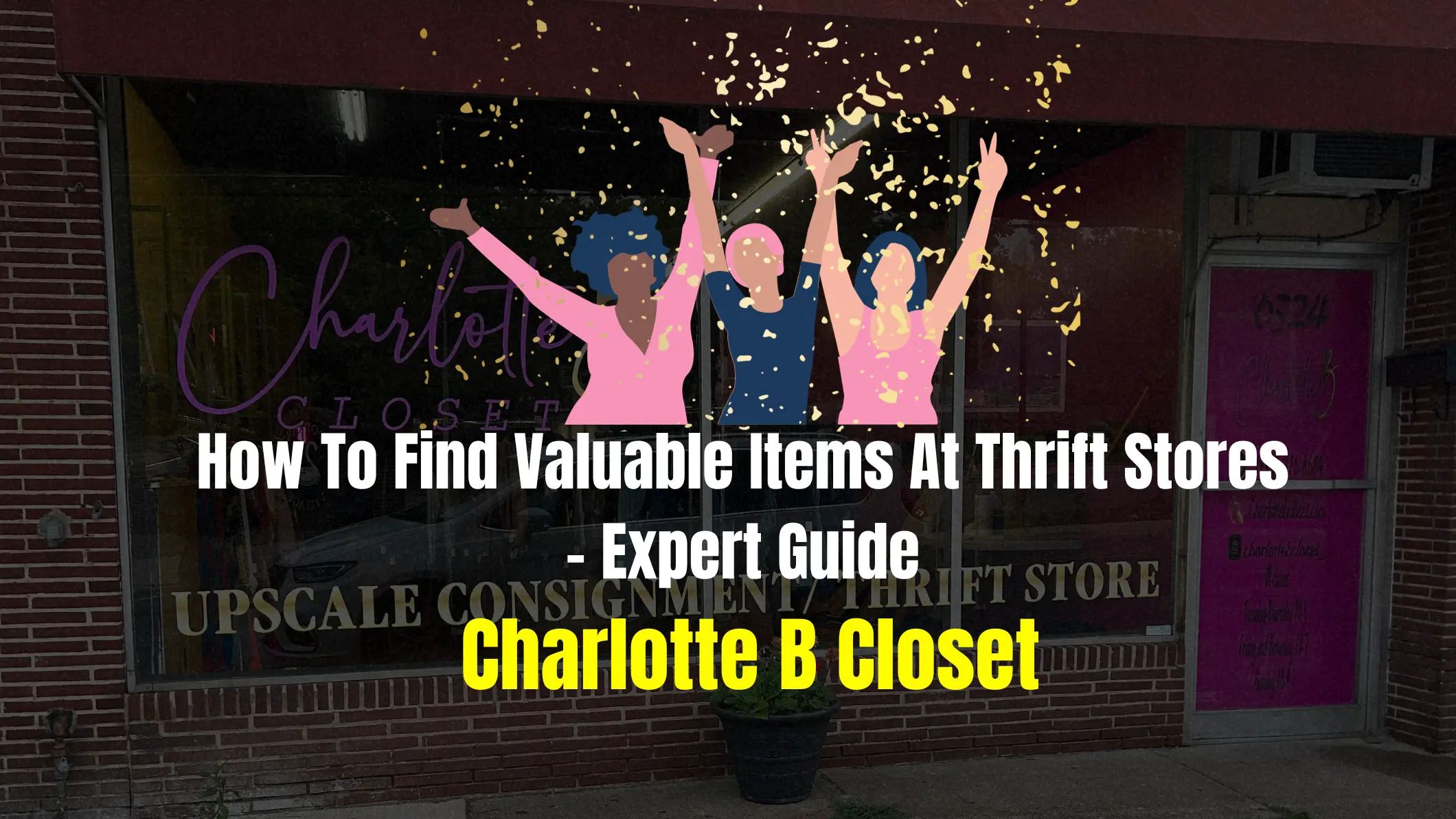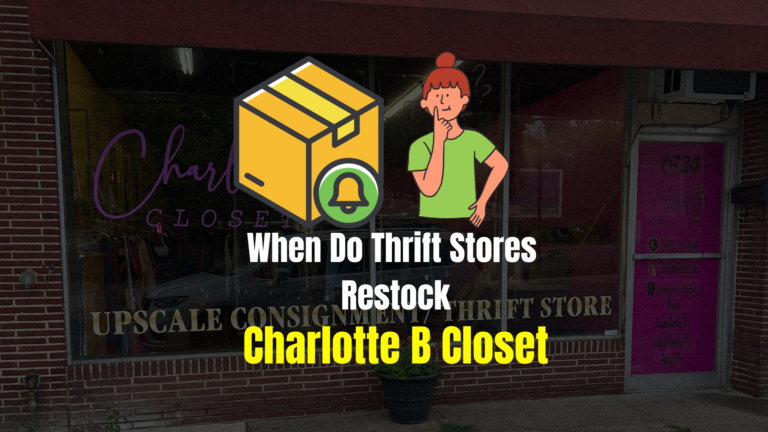How To Find Valuable Items At Thrift Stores – Expert Guide
Have you ever wondered how some individuals consistently unearth hidden gems at thrift stores while others leave empty-handed?
The art of discovering treasures in thrift shops is more strategic than one might think.
Navigating these spaces efficiently means understanding when, where, and how to look. So, how to find valuable items at thrift stores?
To find valuable items at thrift stores, it’s crucial to shop at optimal times, specialize in particular items, recognize top brands within those niches, target prime sections, meticulously inspect potential purchases, assess the worth of uncertain items, and understand seasonal shopping variations.
How to Find Valuable Items at Thrift Stores – A Quick Overview
Thrift shopping is more than a pastime; it’s an art form, especially for fashion enthusiasts on the hunt for unique finds. Identifying those rare, valuable pieces requires a blend of strategy, intuition, and expertise. From choosing the perfect time of day to hit the stores to specializing in specific niches and recognizing genuine, high-end brands, every decision impacts the treasures you might discover. But beyond the hunt, enhancing your thrifting skills and dodging common pitfalls ensures you not only find these gems but also appreciate and capitalize on their true value. Whether you’re a seasoned thrifter or just beginning, refining your approach can open doors to countless hidden treasures.
Best Ways To Find Valuable Items at Thrift Stores
Mastering the art of thrifting requires a mix of strategy, knowledge, and intuition. By understanding the best times to shop, honing in on specific niches, and recognizing value quickly, you can elevate your thrift store outings from casual browsing to treasure hunting.
1. Timing Matters: Choosing the Optimal Time to Shop
Shopping at the right time can significantly increase the chances of finding hidden treasures in a thrift store.
During peak hours, there’s more competition, and valuable items are quickly snapped up.
Choosing off-peak times allows for more leisurely browsing and increases the likelihood of spotting something valuable before someone else does.
Weekends are typically busier for thrift stores as more people are off work.
Shopping on a weekday, especially during working hours, often means fewer shoppers and more opportunity to dig through unexplored merchandise.
Early mornings, right when the store opens, offer first dibs on items that were shelved overnight. Similarly, shopping during the last hours can allow for finds that others might have overlooked throughout the day.
2. Carve Out Your Niche: Specializing in Specific Items
Becoming an expert in a particular category, be it vintage clothing, rare books, or antique furniture, gives you a significant edge. With detailed knowledge, you can quickly identify valuable items, even if they’re priced similarly to less valuable items.
Some popular niches include first-edition books, branded vintage apparel, antique toys, or niche electronics. By understanding the market and demand for these items, you can quickly turn a profit.
3. Brand Knowledge: Recognizing Valuable Brands Within Your Niche
In fashion, brands like Gucci, Chanel, and Louis Vuitton hold value. For electronics, brands such as Apple or Bose can be valuable. By compiling a mental or physical list, you can quickly scan and spot these brands when thrift shopping.
Familiarize yourself with brand-specific logos, stitching patterns, and quality indicators. Authenticity can also be determined by serial numbers, tags, or other unique markers.
4. Strategic Browsing: Targeting Prime Sections First
Certain sections, like jewelry or vintage clothing, might yield higher-value items due to the nature of the items themselves. Understanding which sections are ‘hotspots’ for valuable goods can streamline your shopping process.
Start with your niche or areas of expertise. If you’re unfamiliar with the store layout, ask employees where specific categories of items are located, ensuring you don’t miss out on prime sections.
5. Item Evaluation: Comprehensive Inspection Techniques
It’s crucial to thoroughly inspect any potential purchase. Look for signs of wear that might decrease an item’s value, such as stains, tears, or missing pieces. For authenticity, refer to brand knowledge and markers of genuine items.
Age can add value. Look for date stamps, older manufacturing techniques, or even just a sense of style that indicates an item’s age.
6. Risk and Reward: The Decision to Buy Uncertain Items
Every purchase carries a degree of risk. It’s essential to weigh the cost of the item against its potential resale value. Consider how easily you might resell it and any costs associated with restoring or repairing the item.
Always consider how much you’re investing. If the cost is low and the potential payoff is high, it might be worth the gamble. Trust your expertise and gut feeling.
7. Seasonal Shopping: Why Some Seasons Yield Better Finds
Post-holidays or during spring cleaning seasons often see a surge in donations, providing a more extensive selection of items.
Events like moving seasons, end-of-year clear-outs, or even estate sales can lead to more unique and valuable items being donated. Staying attuned to these times can position you for the best finds.
Shop now at Charlotte B Closet we deliver across the USA.
Enhancing Your Thrifting Skills
As with any skill, successful thrifting can be refined and improved over time. Staying updated with market trends, cultivating relationships with store insiders, and leveraging technology can greatly enhance your thrifting prowess, ensuring you consistently find hidden gems.
Studying Current Market Trends
To make the most out of your thrift shopping endeavors, it’s essential to keep abreast of current market trends.
What’s considered valuable today might not be tomorrow. This is especially true with items like fashion, electronics, and collectibles.
Subscribing to relevant magazines, joining online forums, or following niche influencers can provide insights into what’s in demand.
By doing so, you’ll not only sharpen your ability to identify valuable items, but you’ll also gain a clearer understanding of their potential resale value.
Building Relationships with Store Staff
One of the most overlooked strategies in thrifting is building strong relationships with store staff.
Employees often have first-hand knowledge of incoming stock, popular items, or hidden gems that haven’t been displayed yet.
By fostering a friendly rapport with them, you might get the inside scoop on when the best items will be shelved or even tips on areas of the store that are less frequently browsed by other shoppers.
Remember, information is power in the world of thrifting, and store staff are some of the best sources of this information.
Using Technology to Your Advantage
In today’s digital age, there’s an app or tool for almost everything – thrifting included. Leveraging technology can give you a significant advantage.
There are apps that can quickly assess an item’s value, websites dedicated to authenticating branded goods, and platforms for reselling your finds.
Furthermore, consider setting up alerts for specific items or brands you’re chasing. These digital aids not only speed up the valuation process but also provide a broader perspective on the potential of items you come across.
Mistakes to Avoid When Thrift Shopping
Thrifting offers a world of possibilities but is not without its pitfalls. Avoiding impulsive purchases, thoroughly inspecting potential finds, and understanding the resale landscape can make the difference between a successful haul and a stash of duds.
Avoiding Impulse Buys Without Research
One common pitfall in thrifting is the impulse buy. While a low price can be tempting, it’s essential to resist the urge to purchase without first conducting thorough research.
An item that seems valuable at first glance might be common or in lower demand than you initially thought.
Always take a moment to consult your resources, be it a quick online search or a reference book, before making a purchase decision.
Overlooking Damaged or Irreparable Items
Even a rare or valuable item can become worthless if it’s in poor condition. Always conduct a meticulous inspection of potential buys.
Look for damages, missing components, or signs of wear that could detract from the item’s value or functionality.
While some damages can be repaired, others, especially those on unique or one-of-a-kind items, can render the item worthless.
Failing to Consider the Resale Market
If your goal is to resell your thrift finds for profit, it’s crucial to consider the current resale market.
Just because an item is valuable doesn’t mean there’s an active market for it. Before investing in an item, research similar items’ resale values, gauge demand by checking online listings or auctions, and estimate any associated selling or repair costs.
Being informed and realistic about your potential return on investment will save you from potential losses.
Conclusion
Thrift shopping can be a rewarding adventure, unveiling rare and valuable items that others might overlook.
With the right strategies, including understanding market trends, enhancing thrifting skills, and avoiding common mistakes, anyone can transform their thrifting expeditions into profitable endeavors.
It’s not merely about luck; it’s about knowledge, strategy, and a keen eye for value.
FAQs
1. What’s the best time of day to shop at thrift stores for valuable items?
The optimal time to shop at thrift stores is during early morning hours or late evenings, as these times often see fresh stock displays and fewer shoppers, maximizing your chances of finding valuable items.
2. How can I identify genuine branded items when shopping at thrift stores?
Recognize genuine branded items by studying their specific logos, quality of material, stitching patterns, and checking for any authenticity labels or holograms inside.
3. Which sections of a thrift store are most likely to contain hidden treasures?
High-value treasures are often found in specialty sections like vintage clothing, collectibles, and sometimes electronics, but it’s essential to prioritize areas based on current market trends and demand.
4. Are there specific seasons that increase my chances of finding valuable items at thrift stores?
Yes, post-holiday seasons and spring-cleaning months often result in more donations, thus increasing the inventory and potential for valuable finds at thrift stores.

Hi there, I’m Toni Whitten, but you might know me as LadyT. I’m a passionate entrepreneur and the proud owner of Charlotte B’s Closet, your go-to thrift store and upscale consignment.
Outside the store, I connect with the amazing women in my exclusive Facebook group, Housewives of Baltimore, boasting over 23k+ members.
In my free moments, I channel my passion for sharing genuine insights and helpful guides on various concerns through my blog at charlottebcloset.com.







